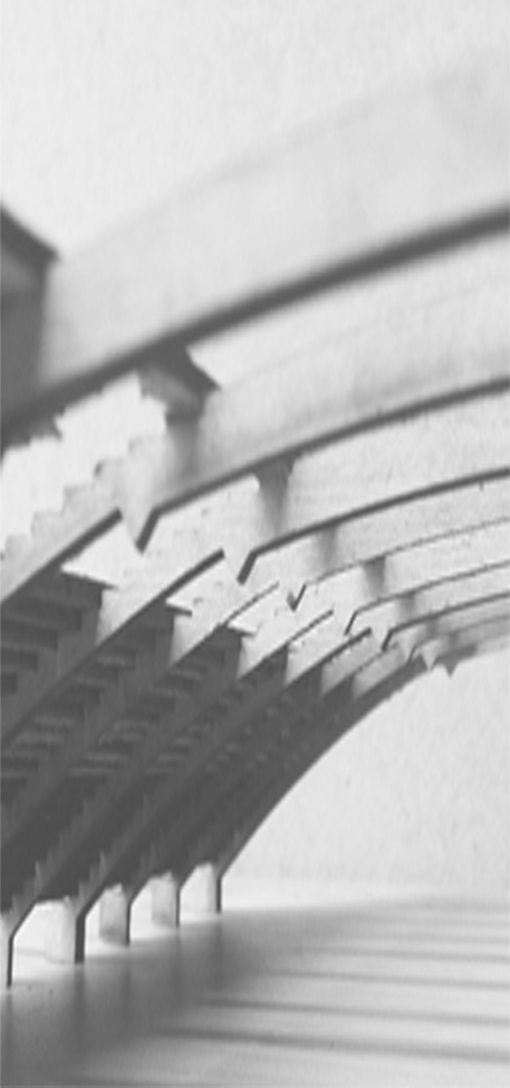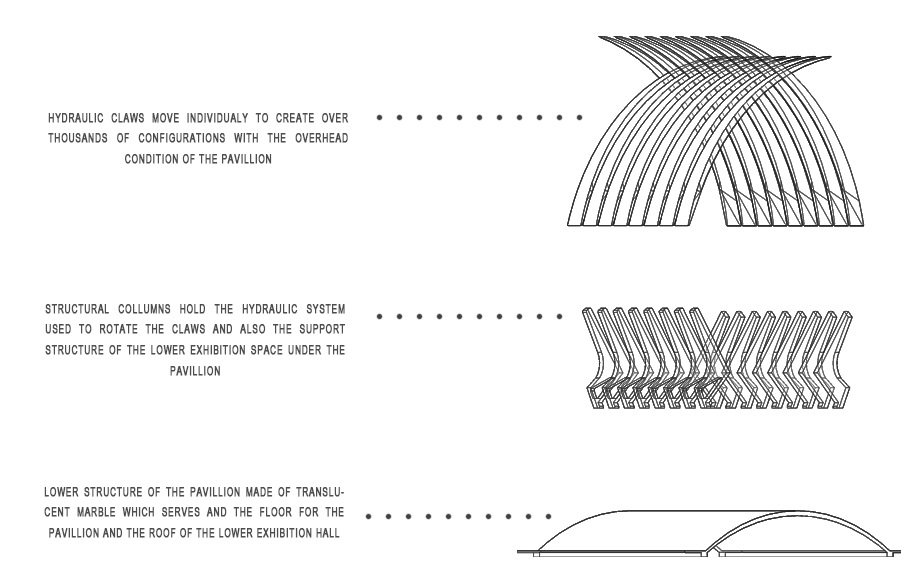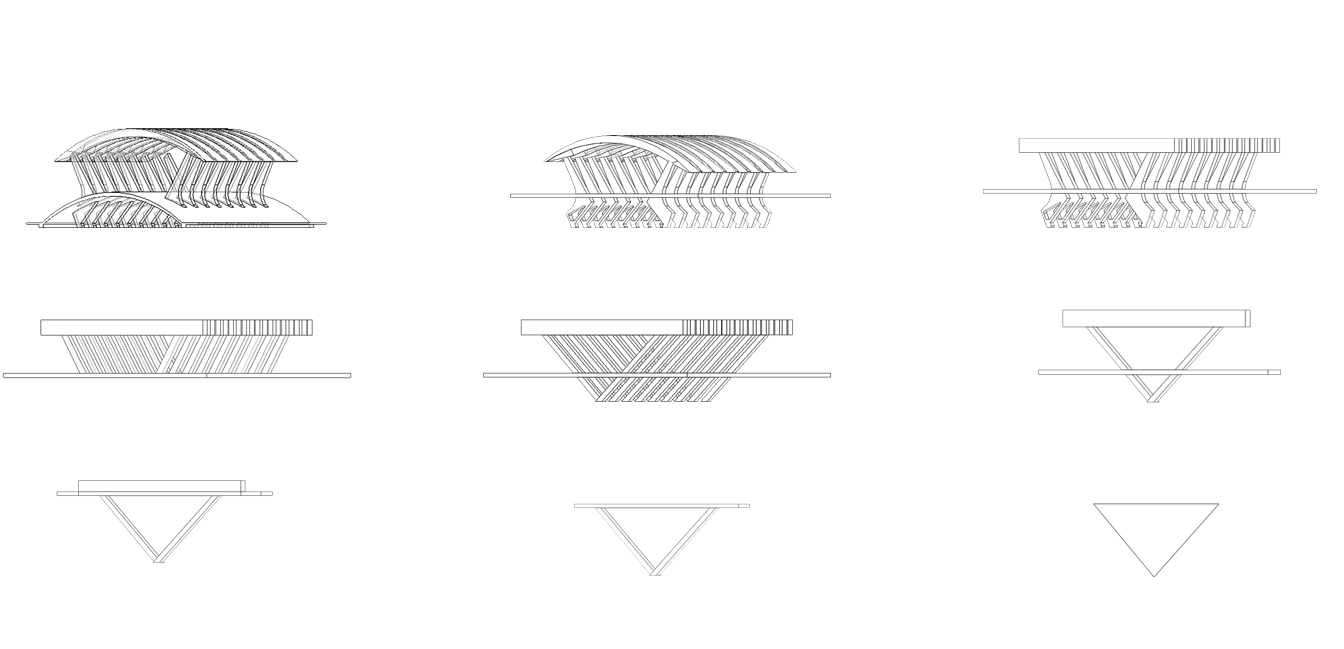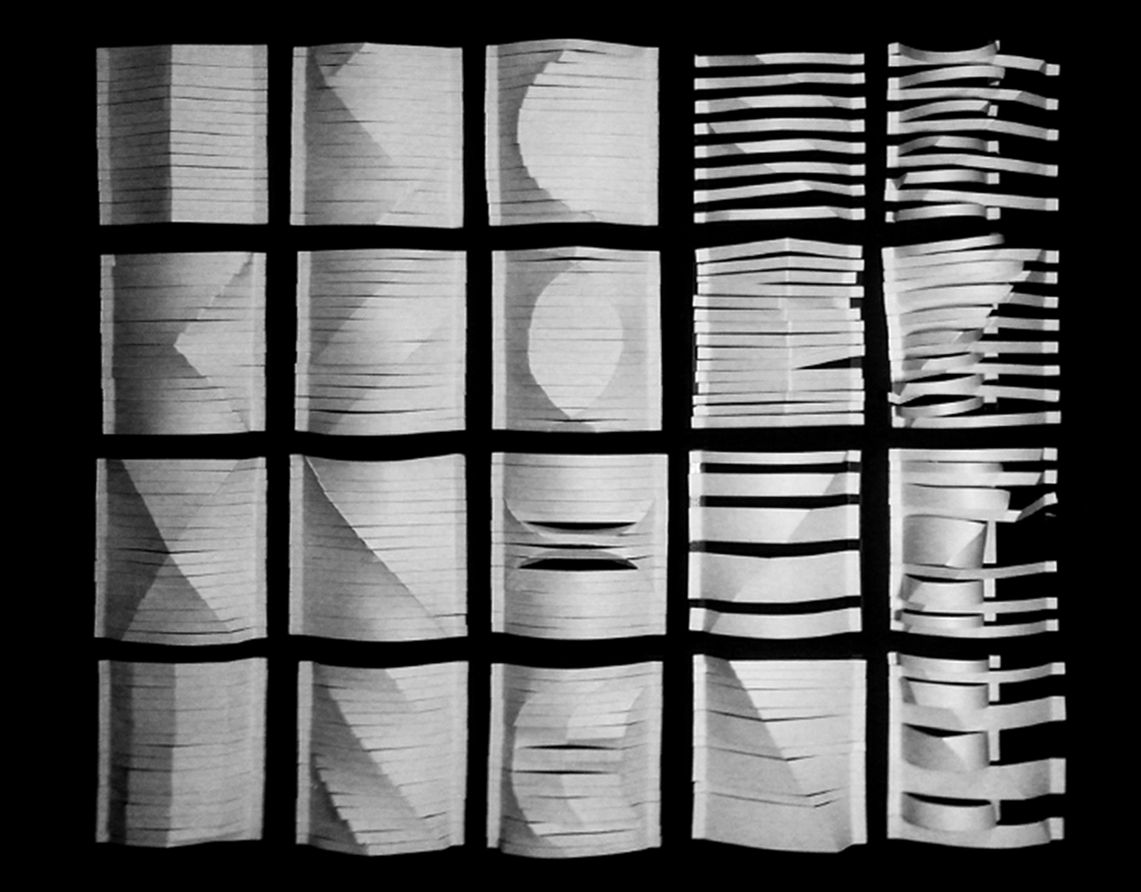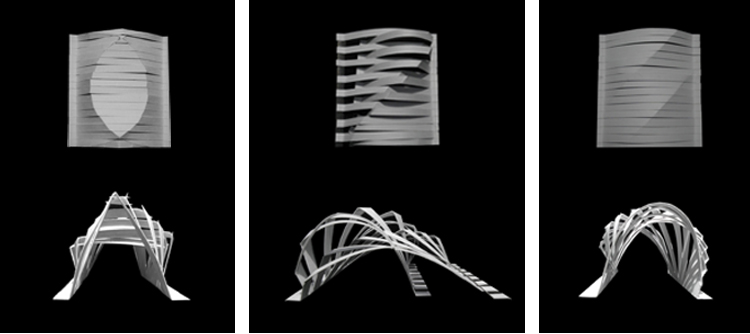MORPHOLOGY
Undergraduate - Design Studio 8
Spring 2012
Instructor:
Carlos Barrios
Morphology can be constituted as a new way to design. It consists of four main "phases" in which a building of model from another architect is studied. The four phases are 1 - Reconstruction, 2 - Morphogenesis, 3 - Metamorphosis and 4 - Derived Design. By using these very precise methods of study we can start to lean about the origin on each architectural design style and most importantly figure out what the "source" geometry of that design is. In this particular study of morphology buildings from the architect Santiago Calatrava were the initial works that are then deconstructed through the morphology method.
Phase I - Reconstruction
Students were first asked to pick and Calatrava building and analyse exactly how the structure worked, down to the way it moves if the structure assigned was kinetic. The Kuwait Pavilion in Seville, Spain was my assigned structure. The structure is kinetic and moves in order to create a new space throughout the day while also representing Kuwait's cultural and geological features.
Phase II - Morphogenesis
The second stage of the morphological design process is that of Morphogensis. At this stage the students are in search of the morphological source of the structure. In order to find the morphological source, a structure must be simplified down to a single ambiguous and symmetrical geometry. In this case the search for Calatrava's morphological source proved to be the same for all his buildings. The source allows for the architect to quickly create designs by simply morphing it according to simple rules that are established at the beginning of the project. The breaking down of the structure into the morphological source are done in step by step changes to the original structure to create the ambiguous form.
Phase III - Metamorphosis
The third part of the morphological design process is Metamorphosis. In this phase a program is picked for the new design and morphological source is expanded upon to create new design ideas. My choice for the projects programs as that of a train station in the downtown Orlando area. My choice of program was inspired by Calatrava's Kuwait Pavilion and the idea of movement. Movement seemed like a very fitting concept ideas since a train station has many commuters that are always in constant motion. I also chose to break down station design into two parts: the overhead conditions and the structural system.
The structural system of the new train station came about with the use of morphology on a lattice derived from the morphological source cube. By taking of of cubes faces and rotating, translating and mirroring the lattice was developed.From the lattice the column unit was established by using a set of simple rules,, such as, every thirty feet the center point of the column is pulled up two feet. After that system carried out its effects a second rule was applied that the right point of the new column was to be pulled at every thirty feet as well. By applying these rule sets a new structural system was designed.
The canopy system study was the initial idea of panels that would be in constant motion. These panels would be incorporated into the design as the overhead condition of the new train station platform. The panels would run on tracks and bend and fold in order to constantly change the experience and the space of the platform. These panels would also be incorporated into the walls and floors to provide safety and comfort features such as seating on the walls and blockades around the train tracks.
Phase IV - Derived Design
The last phase of the morphological design method is the derived design. The final design that was derived from the morphological investigation was an addition to the Church Street train station in downtown Orlando. The platform is in constant movement and provides gathering spaces for rest in the busy downtown fabric. Much like the ever changing downtown commotion the station not only house the movement of trains but also contains kinetic overhead conditions that allow for travelers to "never step in the same station twice". Along with the kinetic overhead condition the station feature smart walls that turn into seating conditions throughout the day and allow for multiple configurations and comfort for the travelers that choose to partake in the train experience of downtown Orlando.



